So you’ve got an adorable puppy…but that puppy is biting or nipping you (not so adorable).
This is a very common and a natural puppy behaviour, but there are plenty of steps you can take to help your puppy learn to be calm and gentle.
Why do puppies nip and bite everything?
When your pup is 2 - 4 months old, they are teething. During this time, they’ll show more interest in chewing, biting and mouthing. This is natural and expected in all puppies, but some are more inclined than others. Puppies don’t have hands so they use their mouth to interact, and they need to learn how to use a soft mouth if engaging with humans. In the wild, the mother dog teaches them not to bite too hard by pinning them or growling.
In this article, I’ll cover the human ways to teach your pup that biting people and chewing household items is not acceptable.
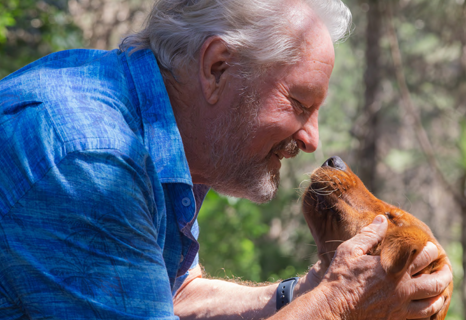
Mark Vette is a world-renowned Animal Behaviourist, Zoologist and Trainer. He brings together a unique combination of academic studies with 40 years of applied clinical animal behaviour consulting and treatment. Mark is a member of the International Association of Animal Behaviour Consultants. This article was written by Mark and the views expressed are his own.
Rest
Firstly, ensure your puppy is getting enough sleep. Young puppies need to rest for 16-20 hours a day, and can become much more crazed and nippy if overtired. Shut them in their crate for naps regularly throughout the day, with a couple of those sessions being at least 1-2 hours long. This can make a huge difference in how much your pup targets you with their biting.
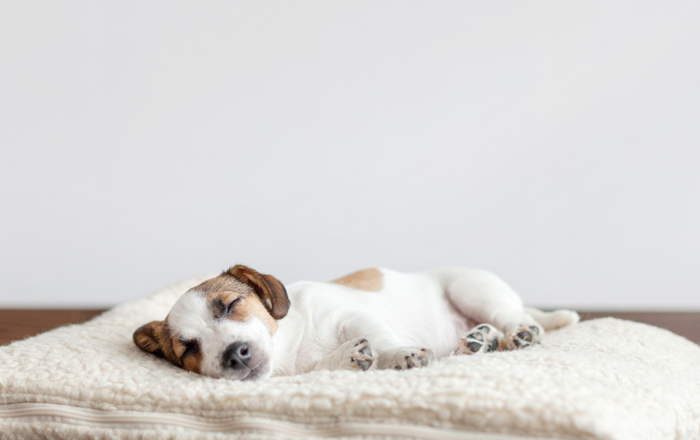
Reinforce calm behaviours
Regularly practise calming commands with your pup such as sit, a bond gaze, and down. Use a clicker and treats to reinforce these calm commands, and regularly click and reward your pup at times when they’re behaving calmly (using a clicker really helps reinforce calm behaviour, but if you don’t have one just say “yes” in place of a click before the treat).
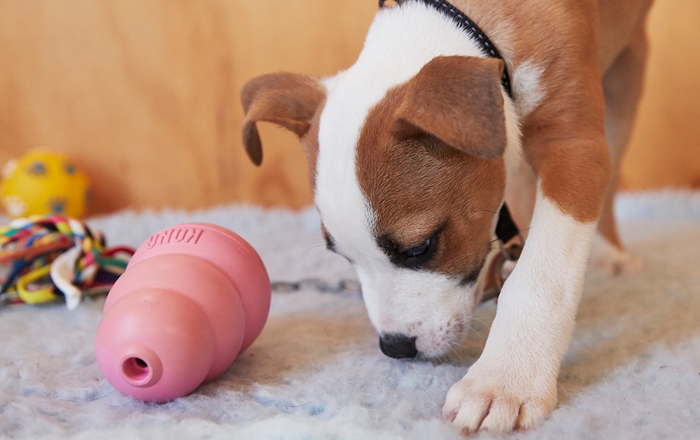
Use dog toys
Make sure your puppy has plenty of tug toys they can play with and chew when they desire. It is important these toys do not resemble anything that is commonly found in the house – a fake shoe is a prime example of a bad chew toy, because once your dog realises it can chew shoes, you will have a hard time stopping it. Select options like rubber toys, rope toys, special wood toys for dogs with no sharp edges, or tennis balls (if you don’t play tennis). I don’t usually recommend soft teddy bears, blankets or pillows, as these could encourage them to chew cushions, couches and bedding. Don’t leave your shoes and slippers or clothes around on the ground in the first few months of your pup’s life inside your home, it’s just too tempting for them!
Teach gentle behaviour
Puppies need to be taught bite inhibition, which is the ability to control the strength and force of their mouthing. A dog who hasn’t learned this with people doesn’t recognise the sensitivity of human skin, so can bite too hard (even in play). It’s natural for pups to play fight as this is one of the ways they learn key behaviours, but it’s our job to teach them how to play in an appropriate way without hurting us.
The first way to do this is by teaching the Gentle command.
To guide your pup to the nice gentle behaviour you want, bring in some positive reinforcement using the Gentle command. When your pup is in a calm mood, allow them to mouth your hand gently. Say Gentle in a calm, positive tone of voice and click and reward for nice gentle behaviour (using a clicker and high value treat, if you don’t have a clicker just say “yes” and give the treat). Practise this lots when your pup is calm, don’t try and introduce this command at a crazy nippy time!
Redirect your pup
When your pup is biting you, try to redirect that biting onto an appropriate tug toy. Offer the toy for them to grab and chew on. Shake it around in a really enticing, exciting way to make it more interesting for them to bite and grab than you are (you’re trying to make it like a prey animal). You could even rub some nice smelling food onto it to make it even more enticing, or try a squeaky toy. If your pup grabs the toy, praise them and play with it with them for a while to reward that redirection.
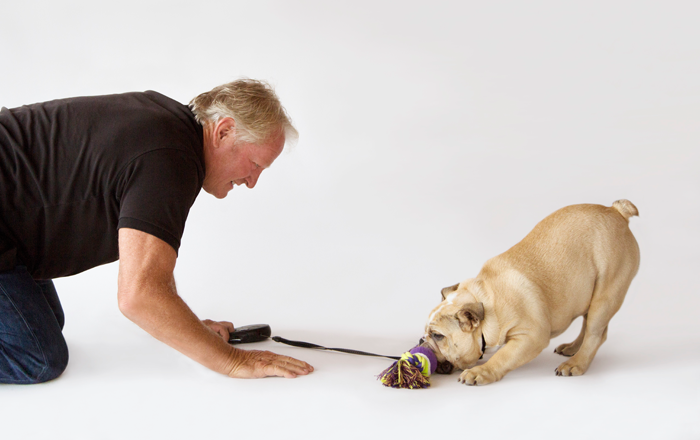
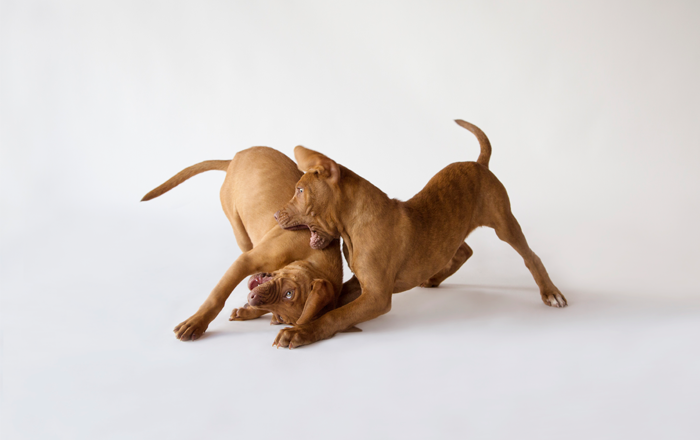
Provide outlets for play
Pups need to be able to play and exert themselves, it’s an important part of their development. I recommend finding some well-matched puppies or young dogs you can meet up with regularly, so your pup can have a good play session and release that need for rough play.
You can also encourage appropriate biting and chewing behaviour in the form of fetching or retrieving. Tie a toy to the end of a piece of rope and throw it away, followed by a Fetch command. When the puppy grabs the toy, pull it back towards you while enticing your puppy in with a Come or Bring it here command. This is a multi-purpose exercise with many benefits. We are giving them a tug toy to redirect their mouthy play on to, we’re fulfilling their natural prey drive and instinctive desire to hunt or chase things, and we are enriching their learning by reinforcing commands like Come. This is a form of playtime that is beneficial to their development as a well-rounded dog.
You can also play tug of war, a great game to give your pup a satisfying outlet for biting and tugging.
When all else fails…
If your pup is still trying to bite or nip you persistently and you have already tried using the Gentle command or redirecting their biting onto a tug toy, either pop them in a safely fenced area outside with some toys to burn off some steam, or put them away in a crate to settle down and show them that you won’t tolerate this behaviour. This is a perfectly acceptable way to handle the situation (in fact, recommended) - and it’s good for you to have the break too, you’ll be able to enjoy your pup more as a result!
Good luck with your training, and remember some maturity generally helps as well.
Always consult your vet on the best way to look after your pet. And to avoid unexpected costs, make sure your pet is insured.
Have a look at our pet insurance plans to choose the right insurance plan for your pet.
